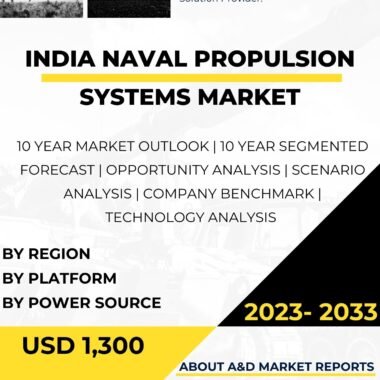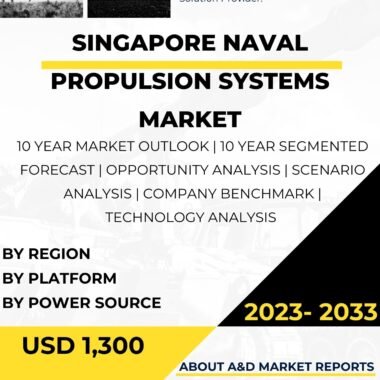Description
Naval propulsion systems are the engines that drive United States Navy ships through the water, enabling them to carry out their diverse missions, from defending the seas to projecting power around the world. These systems are essential to the operational effectiveness and mobility of naval vessels, ranging from aircraft carriers and destroyers to submarines and amphibious assault ships. The U.S. Navy continually invests in advanced propulsion technologies to enhance fuel efficiency, increase speed, and reduce environmental impact, ensuring that its fleet remains at the forefront of maritime power.
The U.S. Navy employs various propulsion systems, each tailored to the unique requirements of different ship classes and operational environments. The most common types of naval propulsion systems are steam, gas turbine, and diesel-electric systems. Each system offers distinct advantages, and their selection depends on factors such as vessel type, mission profile, and intended operational area.
Steam propulsion has a long history in naval vessels and remains in use in some older aircraft carriers and amphibious assault ships. Steam propulsion works by heating water to produce high-pressure steam, which drives a turbine connected to a propeller shaft. Steam turbines provide significant power and are well-suited for larger, slower-moving ships like aircraft carriers. However, their efficiency decreases at higher speeds, limiting their application in modern, high-speed warships.
Gas turbine propulsion is the dominant system used in modern U.S. Navy surface combatants. Gas turbine engines operate by compressing air, mixing it with fuel, and igniting the mixture to produce a high-velocity exhaust gas that drives the turbine and propels the ship. Gas turbines offer high power-to-weight ratios, providing warships with rapid acceleration and high speeds, making them ideal for escort missions, anti-submarine warfare, and precision strike operations.
One of the most widely used gas turbine engines in the U.S. Navy is the General Electric LM2500, employed in the Arleigh Burke-class destroyers and Ticonderoga-class cruisers. These engines provide the ships with the ability to achieve speeds in excess of 30 knots, enabling them to respond quickly to emerging threats and cover vast distances in shorter timeframes.
In recent years, the U.S. Navy has pursued enhanced propulsion technologies, such as Combined Gas and Gas (COGAG) and Combined Diesel and Gas (CODAG) systems. These configurations use multiple gas turbines in combination with other propulsion systems, such as diesel engines or electric motors, to optimize fuel efficiency and performance at various speeds.
For example, some U.S. Navy destroyers use a COGAG propulsion system, which employs two gas turbines for high-speed operations and two diesel engines for cruising at lower speeds. This setup provides a balance between speed and fuel consumption, allowing the ships to maintain endurance and operational flexibility.
The U.S. Navy’s pursuit of advanced propulsion systems extends to electric drive systems for its modern warships. Electric drive systems use electric motors to turn the propellers, driven by generators connected to gas turbines or diesel engines. This technology offers several advantages, including improved fuel efficiency, reduced maintenance requirements, and quieter operations, making it well-suited for submarines and certain surface combatants.
The Arleigh Burke-class guided-missile destroyers equipped with the Integrated Power System (IPS) are an example of electric drive technology implementation. The IPS integrates the ship’s gas turbines, diesel engines, and advanced energy storage to generate and distribute electrical power efficiently, enabling a more flexible and adaptable power distribution.
Another key component of naval propulsion systems is the use of waterjets, also known as marine propulsion jets. Waterjets work by drawing in water through intake ports on the ship’s hull and expelling it at high velocity through nozzles at the stern. The force generated by the expelled water propels the ship forward or provides steering control, offering maneuverability advantages, especially in shallow waters and littoral environments.
Waterjets are commonly used in certain types of high-speed surface combatants and patrol boats. The U.S. Navy’s Littoral Combat Ships (LCS) employ waterjets as part of their propulsion systems, allowing them to operate in littoral areas close to shore and conduct a variety of missions, including mine countermeasures, anti-submarine warfare, and surface warfare.
The U.S. Navy also employs advanced nuclear propulsion systems in its fleet of nuclear-powered aircraft carriers and submarines. Nuclear propulsion provides virtually unlimited range and endurance, allowing these vessels to operate for extended periods without refueling. Nuclear-powered carriers, such as the Nimitz-class and the newer Ford-class carriers, are the centerpieces of the U.S. Navy’s power projection capabilities, enabling them to support a wide range of military operations worldwide.
Nuclear-powered submarines, such as the Virginia-class attack submarines and the Ohio-class ballistic missile submarines, are vital components of the U.S. Navy’s strategic deterrence and undersea warfare capabilities. These submarines can operate submerged for months, providing a stealthy and undetectable presence in critical areas, and are capable of carrying out missions ranging from intelligence gathering to strategic nuclear deterrence.
The U.S. Navy’s commitment to innovation and sustainability is also evident in its exploration of alternative propulsion technologies. The pursuit of alternative fuels and propulsion methods aims to reduce the environmental impact of naval operations, increase fuel efficiency, and enhance the U.S. Navy’s ability to operate in energy-constrained environments.
In recent years, the U.S. Navy has conducted experiments with biofuels and synthetic fuels as potential alternatives to traditional fossil fuels. These alternative fuels are being tested in various naval platforms to assess their performance, compatibility with existing systems, and potential to reduce greenhouse gas emissions.




